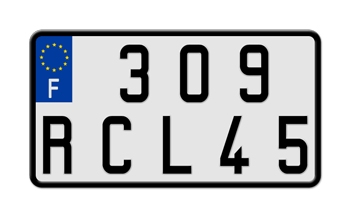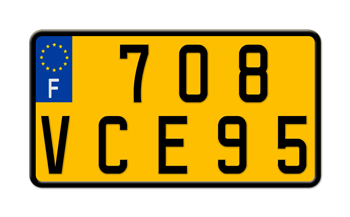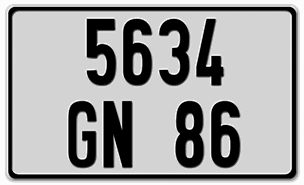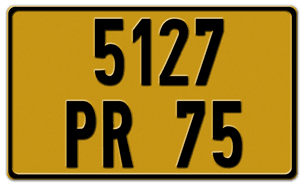License Plates of France
France has claimed it enacted the first laws in the world to register motor vehicles and issue license plates. On 14 August 1893, the Paris Police Ordinance stated: "Each motor vehicle shall bear on a metal plate and in legible writing the name and address of the owner and also a distinctive number used in the application for authorization. This plate shall be fixed to the left hand side of the vehicle and shall never be hidden."
The first French license plates issued were white on black and later silver (aluminum color) on black, and were used from 1893 to 1993. The French introduced retro-reflective license plates in 1993, following Great Britain’s model of reflective white for the front and reflective yellow for the rear. The license plate sizes were 520 mm x 110 mm or 200 mm x 340 mm. After the EEC passed rules standardizing license plate sizes for member countries, the European Community logo with 12 yellow stars plus the letter F in white on a blue field. This Euro-band is on the left hand side of a typical license plate with dimensions 520 mm x 110 mm or on top left corner of 200 mm x 340 mm license plates.
Starting on 14 April 2009, all French vehicle registration plates are issued using the XX-NNN-ZZ format, successfully introduced in Italy in 1994, composed of a series of 7 alphanumeric characters, made up of 2 letters, 3 numbers, and then 2 letters (for instance: AB-123-CD). There is no longer a local departmentcode as in the previous system, but only a sequential number. This number is allocated to a vehicle for its life and does not change if the car is sold or the owner moves. There is an option to include a blue strip on the right of the plate, showing the region logo and number. For example Paris Region is 75. Temporary license plates are colored silver-on-red, both front and rear.












